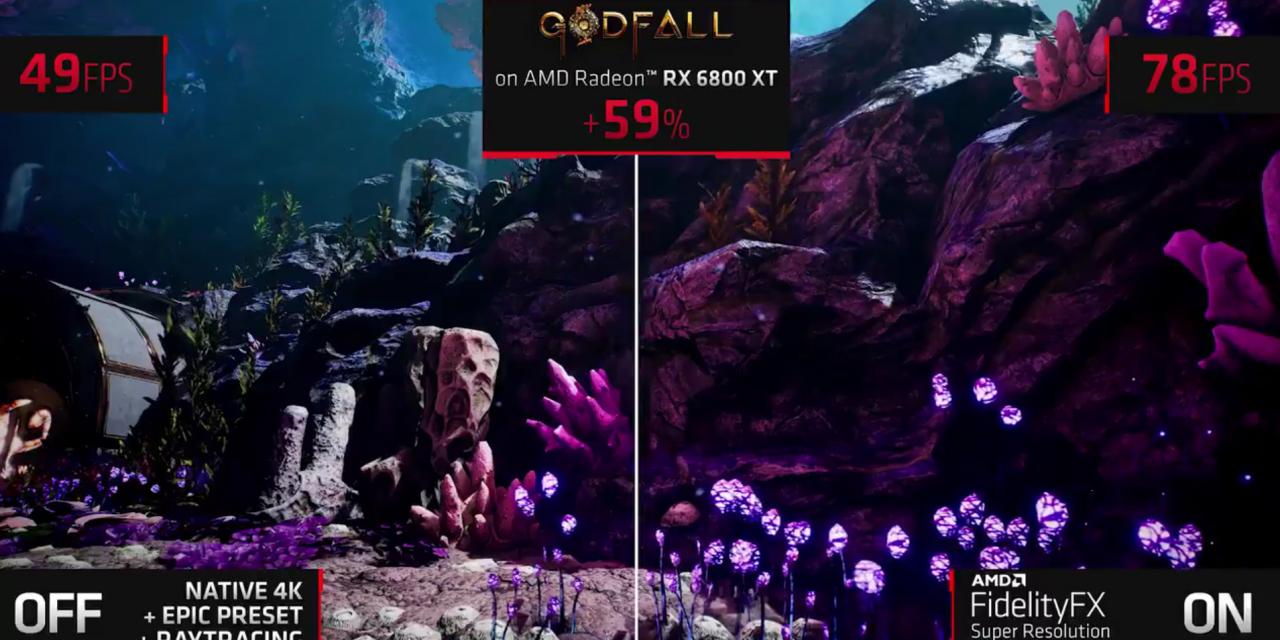
AMD's upcoming DLSS-alternative, FidelityFX Super Resolution (FSR) was fleshed out in much greater detail in AMD's Computex 2021 keynote, giving us a first real look at what it's capable of. Along with its ability to provide between 50% and 300% of performance enhancement in some games — depending on which quality mode you hit — FSR will be available across AMD's RX 6000, 5000, 500, and Vega GPU generations.
Arguably the biggest news though, was that it will also extend this functionality to Nvidia's GTX GPUs, including its 10th-generation Pascal lineup. With the Nvidia GTX 1060 being the most popular GPU in the world, even today, this could give that card a massive lease on life in supporting games, and heavily encourages developers to support FSR over DLSS (or as well as) in order to give the greatest number of gamers the widest possible support.
Enabling FidelityFX Super Resolution at "Ultra Quality" gives a practically identical visual experience with around 59% more performance in Godfall. Or get up to 2.5x the performance in select games when you choose the #FSR "Performance" preset in 4K. The choice is yours. pic.twitter.com/zjShErY9KK
— Radeon RX (@Radeon) June 1, 2021
In some first party testing, AMD claimed that FSR could deliver 300% performance over native 4K using FSR performance mode in select titles, though that would lead to some degradation in visuals. A 50% uptick in performance was still possible in quality-mode, however, where the visual difference was very limited, if noticeable at all.
With an AMD 6800 XT, Godfall at 4K would run at around 49 FPS, in ultra mode, 78 FPS, and up to 150 FPS in Performance mode.
In the upscaling demo video, it's clear that FSR is a little bit blurry compared to native, but it's pretty close, and that's a big performance uplift and could be a major advantage for AMD with support for such a wide range of GPUs.
FSR will debut on June 22, with up to 10 games and engines already showing support.








